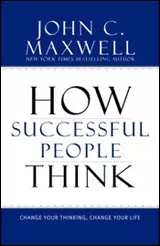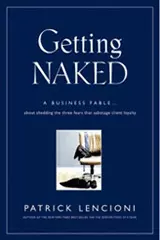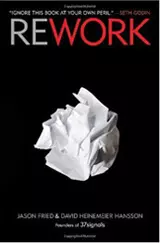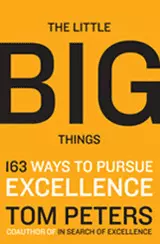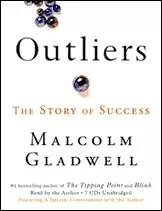Our 6th Annual Summer Book Review!

Each year, whenever I consider books to include in the annual "Summer Book Review," I select enjoyable books that challenged my thinking, or gave me new insights into what appear to be ordinary problems. And then, once I pick them, I look for a common thread running among them, because such a thread is always there – even if I'm not initially aware of it.
This year, all these books helped me think differently about things – but when I started to consider a title, nothing really clever came to me. Of course, I could use "Think Different" – but I'd be copying a past Apple slogan. "Think Differently" – not sufficiently different. Maybe just "Think" – didn't capture my meaning.
So I was sitting at my desk, thinking about thinking, when I realized one of my favorite authors, John Maxwell, had done just that in one of these books. So I pulled out How Successful People Think, flipped through the Introduction, and found my title and lede as Dr. Maxwell's first step of "How to Become a Better Thinker":
Expose Yourself to Good Input – Good thinkers always prime the pump of ideas. They always look for things to get the thinking process started, because what you put in always impacts what comes out. (page xi)
Taking my cue from Dr. Maxwell, these books are all about priming your mental pump – giving you counter-intuitive ideas, deep insights, or pithy "rules of thumb" learned from hard experience. Benefit from these authors and their ideas, crystallized in these fine books.
And another credit to Dr. Maxwell – I categorized these six books based on his eleven thinking skills.
"Learn from Reflective Thinking"
How Successful People Think: Change Your Thinking, Change Your Life, by John C. Maxwell
This book is the product of the author evaluating everything he has ever written about thinking – and presenting his "personal best" here. He identifies eleven types of thinking used by successful people, and provides step-by-step techniques to improve your thinking in these areas.
Dr. Maxwell calls reflective thinking "the Crock-Pot of the mind. It encourages your thoughts to simmer until they're done." While he didn't call it "reflective thinking" at the time, John (in one of his Maximum Impact monthly audio teachings) clearly was describing this concept when he said "Experience is not the best teacher – evaluated experience is. Reflection turns experience into insight." Everyone has experiences – very few people have evaluated experiences. (See Two Decades – Evaluated Experiences, and Lessons Learned.) To evaluate your experiences, you need time, focus, your calendar and journal, and other "ingredients" to put into your mental slow cooker.
This wonderful book features convenient organization, an attractive layout, pertinent quotes from successful thinkers, and Dr. Maxwell's folksy style and incredible content, reflecting his inimitable ability to distill complex ideas in ordinary language and easy-to-apply rules.
"Cultivate Big Picture Thinking"
Linchpin: Are You Indispensable?, by Seth Godin
One quality John Maxwell attributes to big picture thinkers is "Look Expansively" – exactly what Seth Godin does in Linchpin. The author weaves an expansive tapestry moving from early human societies based on craftsmanship, to the current – yet declining – industrial era of mass production built on "management" and "labor," to a new era reclaiming the "art" of earlier times based on a new type of person, a "linchpin." Through it all, Seth tells a fascinating story of how we came to where we are – including some interesting insights on psychology, brain structure, society, and education – and uses this to extrapolate a "big picture" future about the changing nature of work.
No longer is work about "factory work" – including white-collar "factories" such as call centers – and hard or draining tasks, nor is work about being part of management and controlling access to the "factory" and other resources needed by the workers to do their jobs and get paid. A new type of work – inventing things, connecting the appropriate ideas and persons, and making things happen – is developing, requiring a new type of worker, a linchpin. In this book, "art" is anything requiring "emotional labor" to produce – items such as a photograph, a blog post, an advertisement, and even an email are "art," and the people producing them are "artists."
While emotional labor seems to be easy – after all, how hard can it be to pour yourself into a painting, a marketing piece, or even a client presentation? – it can actually be much harder than manual labor performed in the "factory." Why? Because our evolution has been geared toward physical labor and not emotional labor. Linchpins are the essential persons who connect workers and managers to invent new products and services, and to get things done. As such, linchpins are artists because their key tool is emotional labor – they care very deeply about their work, transforming the ordinary into a gift of art.
I found myself stopping and thinking many times as I was reading Linchpin, because I was trying to understand Seth's big picture ideas and apply them to my situation. At some point, it clicked – linchpins fill my firm. We tailor every one of our projects to a client's specific needs, and take great pride in delivering exactly what our clients need to improve their business. People able to do this are linchpins and will always be indispensable.
Seth's vision underlying the entire book is found near its start:
Instead of focusing on complying with management as a long-term strategy for getting more stuff and being more secure, we have a chance to describe a powerful vision for our future and to actually make it happen. This new dream isn't about obedience, it's about vision and engagement. (page x)
A new vision of work and the workplace? Big picture thinking, indeed!
"Harness Creative Thinking"
Getting Naked: A Business Fable, by Patrick Lencioni
In 2002, Patrick Lencioni authored one of the most popular "business fables" of all time, The Five Dysfunctions of a Team. All of Pat's books have the same two-part format: "The Fable" tells the story and illustrates key points, and "The Model" summarizes the key points and explains the unifying concepts. This book is significantly different, though, because – unlike previous books dealing with problems facing his clients – this one illustrates the operating principles of his own consulting firm.
"Celebrate the Offbeat" and "Connect the Unconnected" are two characteristics John Maxwell credits to creative thinkers – and "The Fable" features a good plot and a number of oddball characters, while "The Model" pulls all the concepts together.
The plot? A large management consulting firm acquires a smaller boutique firm – which consistently beat out the larger firm for new clients – having a completely different culture. The large firm's executives task a cocksure top manager with integrating the smaller firm into the practice, and then the fun begins!
Along the way, this manager moves from arrogance about the boutique firm's size and jealousy toward its near-mythic founder, to a profound admiration of the "naked consulting" concept. While this phrase is a bit titillating, this book is not actually about consulting in the buff – rather, "getting naked" is a metaphor for practicing extreme honesty with clients, to benefit both the client and the practitioner. The key to this practice? The willingness to be vulnerable in front of your clients – the willingness to ask what may be perceived as a "dumb question." Clients want passion and commitment from their consultants and other service providers, and vulnerability enables these qualities.
The author ends the book by explaining the model, identifying three fears sabotaging client loyalty – Fear of Losing the Business, Fear of Being Embarrassed, and Fear of Being Inferior – and sharing techniques to overcome these fears. As I thought about the three fears and the principles of "naked services," I realized our motto – "No Guessing. No Surprises. Tell the Truth." – embodies these principles and addresses those fears.
I really liked this book – certainly because my business is a consulting firm, but more because the principles apply to businesses of all stripes. I wish all companies would practice the level of honesty espoused in this book – it would make buying and using goods and services a more rewarding experience for everyone.
"Employ Realistic Thinking"
Rework, by Jason Fried and David Heinemeier Hansson
In the introduction, the authors cite a number of "they say" truisms they've been told over the years, and how they have proven every one of them wrong by succeeding in spite of the supposed constraint or limitation. They share their objectives in writing Rework:
First, we'll start out by gutting business. We'll take it down to the studs and explain why it's time to throw out the traditional notions of what it takes to run a business. Then we'll rebuild it. You'll learn how to begin, why you need less than you think, when to launch, how to get the word out, whom (and when) to hire, and how to keep it all under control. (page 5)
Then they deliver on their objectives. This book is a series of short essays (one to two pages) organized by topic, with a catchy title and typically accompanied by a clever pen-and-ink illustration. Some of my favorite topics:
- Learning from mistakes is overrated (pages 16 and 17) – While mistakes are inevitable, successes are not, and the authors remind us "Success is the experience that actually counts. That shouldn't be a surprise: It's exactly how nature works. Evolution doesn't linger on past failures, it's always building upon what worked. So should you."
- Building to flip is building to flop (pages 59 and 60) – If you're building a business, don't pin your hopes on building and selling it quickly – it doesn't always work that way. But if it does, the obvious question is "what do I do next"? The closing advice really resonated with me – "If you do manage to get a good thing going, keep it going. Good things don't come around that often. Don't let your business be the one that got away." Amen!
- Make tiny decisions (pages 130 and 131) – This essay itself is worth the price of the book! It explains why big decisions beget ego, pride, and inertia, and obviously involve more risk and the potential for big mistakes. The authors write, "When you make tiny decisions, you can't make big mistakes" and also "the best way to achieve those big things is one tiny decision at a time." This echoes my hard-learned philosophy – I'd rather have a great batting average hitting singles and doubles, than swing for the fence and whiff badly.
Jason and David offer practical advice, are obviously quite proud of being successful yet small, and exemplify several of John Maxwell's characteristics of "Realistic Thinking" by:
- Minimizing Downside Risk.
- Providing a Foundation to Build On.
- Bringing the Dream to Fruition.
I have not met these guys – but if I did, I know I would like them. They obviously know how to run a good business – one they intentionally keep small, focused, and profitable. They're also great writers!
"Utilize Strategic Thinking"
The Little BIG Things: 163 Ways to Pursue Excellence, by Tom Peters
Tom Peters is co-author of the business classic, In Search of Excellence. This book also deals with excellence and despite its size (538 pages), it is less "novel" and more "short story." It's best to think of this book as 163 two-page to four-page essays, grouped into 41 topical sections, and punctuated by seven "Special Sections."
I'd be fibbing if I said I read books like this one cover to cover. To me, this book is an excellent reference book and idea generator. Have a problem, and need some insights or creative ideas? Find the relevant topic in this book, skim the titles of essays explaining the ideas, and cherry pick what you most need.
I bought this book for concepts in one specific idea – 112. Now Hear This! Listening Is the Ultimate "Core Competence." – for a firm meeting, found what I needed, and then continued on to the other two topics in the Listening section – 113. Are You an "18-Second Manager"? and 114. Get the Story. Give the Respect. – to find more relevant tips and concepts!
This book helps implement several of Dr. Maxwell's "Strategic Thinking" guidelines because it will help you:
- Break Down the Issue.
- Ask Why Before How.
- Identify the Real Issues and Objectives.
- Develop Your Plan.
Not sure which of these books you want to read this summer? Buy this one, for the breadth of its topics, the ease of "pick it up, put it down," and the value conveyed in every topic. This book is fun to explore – just open it to a random page and get a good idea!
"Question Popular Thinking"
Outliers: The Story of Success, by Malcolm Gladwell
I admit it – I'm envious. I wish I could research and write like Malcolm Gladwell! In this wonderfully entertaining and informative book, the author goes behind the success of the Beatles, Bill Gates, and many others to discover non-obvious, highly unique factors at play in their success. The book's overall thesis is:
People don't rise from nothing. We do owe something to parentage and patronage. The people who stand before kings may look like they did it all by themselves. But in fact they are invariably the beneficiaries of hidden advantages and extraordinary opportunities and cultural legacies that allow them to learn and work hard and make sense of the world in ways others cannot. It makes a difference where and when we grew up. (page 19)
And the rest of the book illustrates unique factors, such as:
- "The Phenomenon of Relative Age" – This explains why so many players on the 2007 Medicine Hat Tigers (an elite teenage ice hockey team in Canada) were born in January, February, or March. (page 21)
- "The 10,000-Hour Rule" – Why did the Beatles have such a cohesive sound and a large song catalog? It wasn't because they stayed in Liverpool. As John Lennon explains, "In Liverpool, we'd only ever done one-hour sessions, and we just used to do our best numbers, the same ones, at every one. In Hamburg, we had to play for eight hours, so we really had to find a new way of playing." (page 49)
- "Demographic Luck" – The timing of one's birth, especially when compared to all the births around the same time, makes all the difference in whether schools have large or small class sizes, the amount of scholarship money available, and even the state of the job market at college graduation. (pages 129 and following)
In explaining the stories behind the successes – being functions of "Opportunity" and "Legacy" as much as "Talent" – the author illustrates two reasons why John Maxwell suggests questioning popular thinking:
- Popular Thinking Sometimes Means Not Thinking – Why do Asians do so well at math? Work ethic is certainly a factor – and this ethic comes from the year-round care needed by a rice paddy, distinguished from the seasonal agriculture practiced in the United States. Another factor? The length and irregularity of the English number-naming system – four, fourteen, and twenty-four – versus the shortness and regularity of Asian number naming – four, ten-four, and two-tens-four.
- Popular Thinking Offers False Hope – Think every child growing up in America has the opportunity to become Bill Gates? Popular thinking would say "yes" – but the sad truth is "no." Bill Gates was the product of some very unique, highly improbable circumstances.
Highly recommended!
In closing, I believe the main reason my business is celebrating its twentieth anniversary is because my colleagues and I routinely employ many different modes of thinking. Nothing improves my thinking more than learning from other thinkers through their books. Six great books illustrating six different types of thinking, six fun options for your summer reading – and six easy ways to prime your mental pump!
Enjoy,

Todd L. Herman


